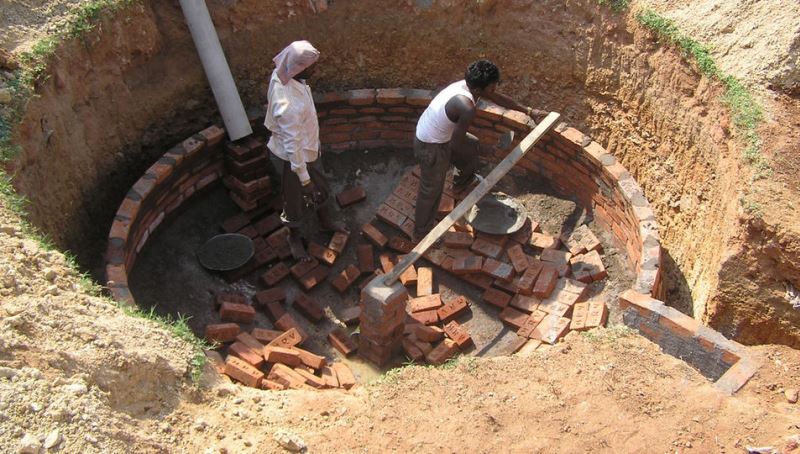Biogas Can Play a Key Role in Going Vocal for Local

Biogas is an environment friendly gas and a sustainable source of energy. It is also a decentralized source of energy and has high calorific value. It is a renewable energy which can be used for cooking as well as lighting in villages. Biogas can simply be produced by the anaerobic decomposition of organic matter such as animal waste, household waste, crop residues, etc.
However, there is still considerable lack of knowledge and enthusiasm towards this energy source produced by recycling waste. And now, with the Prime Minister’s call for going vocal for local could provide fresh impetus in the adoption of biogas as a source of energy across rural and peri-urban India. This is because nothing could be more local than generating your own energy right at your household or village level.
The machines and equipment required to take energy to rural and remote parts of India comes with its own challenges. A key challenge is that a lot of the required equipment come from outside India. With the adoption of biogas as a source of energy, this could be a great boost to the Vocal for Local transition. Let us try to understand the advantages of this recycled source of energy.
Advantages of Biogas
In many rural parts of India, even today, wood and kerosene are used as fuel for cooking and lighting. Using lots of wood is dangerous and leads to further deforestation. Therefore by using the agricultural waste, household waste, animal waste as feed for producing biogas, pollution can be reduced.
The adoption of biogas can reduce the use of wood as fuel for cooking. Time consuming collection of firewood will then not be required and children have more time to go to school. Further, biogas is a clean gas which does not produce any smoke. By producing biogas in biogas plants, all cooking needs of people living in rural areas can be met. Hence it also helps in improving the quality of life of women.
The raw material like cattle dung, which is used as input for producing biogas, is easily available in villages. Therefore villagers can use them as raw materials, and burning of these raw materials would produce biogas which is similar to natural gas. But the difference is that biogas is renewable gas and natural gas is non renewable and natural gas is derived from fossil fuels. Biogas is derived from natural organic substances.
A National Project on Biogas Development (NPBD) was initiated in 1981-1982. Its aim was to set up 12 million biogas plants based on use of cattle dung as feedstock. It is one of the two largest biogas projects in the world. The Government of India has consistently been setting up initiatives to boost and promote biogas, though much more needs to be done in this direction.
Design of Biogas Plants
Biogas can simple be harnessed by constructing a household or village or community level biogas plant. The design of the biogas plant should be made such that the possibility of errors should be minimized. Under the supervision of an expert, the biogas plant can simply be constructed by local mason workers.
Location of the biogas plant
- It should be close to the village households where the gas will be used though a little away from the residential premises.
- It should be located where there could be continuous supply of cowdung, agricultural waste, municipal waste etc. to be used as feed for biogas production.
- It should have the space for ensuring that the biogas so produced can be easily transported through pipelines to the village households.
Size of the plant
The size of the biogas plant is governed by the structure, and the amount of waste it will handle. The structure is as follows:
- Mixing tank: for mixing of water and cowdung mechanically.
- Digester: Digesters can be one or two. Digestion time can be 40-50 days
- Pressure regulation tanks: Biogas which is generated is transferred to the pressurized regulation tank. This pressurized gas is distributed to the village through underground pipes.
- Vermicompost sheds: Some amount of output slurry is also produced. This is converted in vermicompost in these sheds.
The end product is as follows:
- Clean gas fuel: The biogas produced in the plant is clean and has high efficiency and can be used easily.
- Management of wastes: The household wastes, agricultural wastes, and domestic wastes can be used as feed for biogas plant. It can be used as raw material for feeding in the digester.
- Cleanliness: After removal and efficient use of all the waste products, the village would be neater and cleaner.
- Generation of employment to the villagers: The villagers can be employed in the biogas plant.
- Money will be saved by villagers because of savings in alternate fuels. In the village revenue would be generated which could be used for betterment of the village.
Deenbandhu Biogas Model for Villages
With biogas, the key is the design of the biogas plants. It is for this reason that the Government of India often conducts design contests inviting innovative designs of biogas plants. The most recent such call for designs was made in January 2020 by the Ministry of New and Renewable Energy.
One of the first successful models of Biogas plant for villages is the Deenbandhu (friend of the poor) model which was developed by AFPRO (Action for Food Production) in 1984. This model is designed on the principle that surface area of biogas plants is minimized to reduce installation cost, without sacrificing efficiency of plant. The design consists of segments of two spheres of different diameters joined at bases.
The structure formed acts as digester and gas storage chamber. Spherical structure is loaded from convex side. The digester is connected with inlet pipe and outer tank. The Upper part above normal slurry level of outer tank is called outlet displacement chamber. It is designed to accommodate slurry which is displaced out of digester and accumulation of biogas. It uses cattle dung as feedstock. Slurry level in digester falls whereas in outlet chamber it starts rising with formation of biogas. Biogas flows through gas outlet pipe to point of utilization of biogas.
Conclusion
While biogas is the most clean source of energy that can be, especially for rural India, we are still far behind in improving its existing technology. This is the greatest drawbacks of biogas plant and we need rapid advancement in new technologies for biogas production. There is also lack of trained personnel and researchers in this field, thus there is always risk of improper construction of biogas plant which could lead to a disaster. Therefore, while overall biogas is very beneficial, we need to work to make its technology even better than what it is today.
Biogas is a clean fuel and keeps the Earth clean of free from harmful emissions. It ensures that waste is used to create fuel, and does not use any amount of fossil fuel at any stage. Recycling of organic wastes contribute to sustainable waste management while providing almost free energy to rural India.
Image by SKG Sangha




Would like to know construction cost of this deenabandu model.